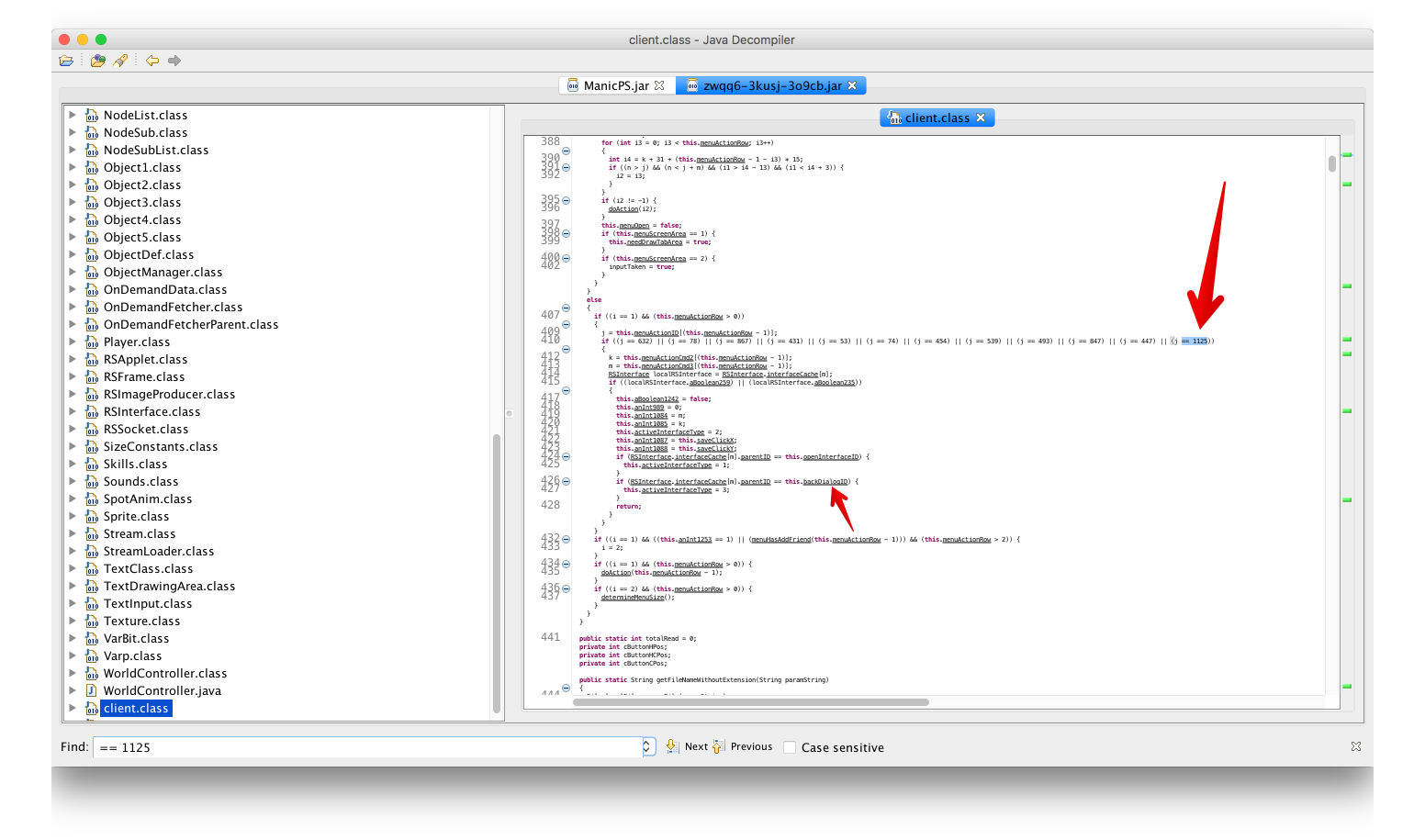

There's a few topics to talk about;
Even though we explain a lot of basic stuff in here, the hooking process itself requires you to have a lot of knowledge around this topic. You can gather this knowledge by inspecting clients, doing things yourself and simply try, try, try.
There's a real difference between a loader and a client.
Long story short, it's the client you'll need, not the loader!
The loader is basically a simple application that starts up the client, which could include various arguments, auto-updating etc.
Because we rely on the client and not the launcher, you'll need to grab the jar.
In most launchers it's easy to grab the actual client, as they have some string with ".jar" in it, to load the client.
Simply download this jar and check if it contains enough classes to be the client.
Parabot loads its hooks using an XML parser. This system reads an XML file and gets all contents from it using the XML structure.
Once loaded, it goes through all types of hooks and edits the client to receive those hooks easily.
The backend isn't quite simple, but isn't required to understand when start hooking a server.
If you're interested (for some reason), you probably have enough knowledge to understand, so you'll figure your way out with this link.
We've a few different type of hooks;
Interfaces is basically a reference to the actual class, it looks like this:
<add>
<classname>client</classname>
<interface>Client</interface>
</add> |
As you can see, we reference the name Client to the class client.
In that way we can easily say Client.fieldname to retrieve a fieldname, without typing out the whole class each time.
This is especially useful for clients which have strange names (like oAjEaif) for their classes.
A getter looks like this:
<add>
<accessor>Client</accessor>
<field>backDialogID</field>
<methodname>getBackDialogId</methodname>
<descfield>I</descfield>
</add> |
aF), but in this case it's a more logic name.getBackDialogId (this field is not for the client, but for the system itself, Parabot).IA setter could be useful to change a field value; it looks like the following:
<add>
<accessor>Client</accessor>
<field>openInterfaceID</field>
<methodname>setInterface</methodname>
<descfield>I</descfield>
</add> |
A callback is a way of intercepting methods called in the client, called by the client itself.
Let's say the client sends a message to an user, we can intercept that method to see what message is sent.
A callback looks like the following:
<add>
<accessor>Client</accessor>
<methodname>doAction</methodname>
<desc>(I)V</desc>
<callclass>org/rev317/min/callback/MenuAction</callclass>
<callmethod>intercept</callmethod>
<calldesc>(I)V</calldesc>
<callargs>0</callargs>
</add> |
()) and what kind of type it returns (it's a void in this case)intercept), which is most likely the same as the desc of the client methodintercept())An invoker is a way to call a method. This is different from the intercepter, as we now call the method instead of receive the output of the method.
An invoker looks like the following:
<add>
<accessor>Client</accessor>
<methodname>doAction</methodname>
<invokemethod>doAction</invokemethod>
<desc>V</desc>
<argsdesc>(I)</argsdesc>
</add> |
We've created a basic hook file, where you can copy the fields from, you can find this here.
You can also find a lot of other hooks (and old hooks) for reference here.
Well the hooking process isn't an easy thing to teach, it's better to practice a lot and understand (317) clients.
It's basically comparing a non-obfuscated client to the actual client.
Most easy to use would probably JD-GUI and simply insert the client and the non-obfuscated client (you can find that one here).
An example of looking for hooks would be like as in the following screenshot:


In this case we've found the field backDialogID by simply comparing actions in the non-obfuscated client against the actual client.
So for this client the getter field would look like this:
<add>
<accessor>Client</accessor>
<field>YJ</field>
<methodname>getBackDialogId</methodname>
<descfield>I</descfield>
</add> |
We've created an smart system to detect local development/hooking of a server, you can do this by creating a new (json) file within your Parabot/Servers directory.
For example create a file called server.json and insert the following:
{
"name": "New server",
"author": "My name",
"version": 1.0,
"client-class": "client",
"locations":{
"provider": "http://bdn.parabot.org/api/v2/bot/download/317-api-minified",
"server": "/path/to/the/server_jar.jar",
"hooks": "/path/to/the/hook_file.xml"
}
} |
This will load the provider, get the client class (make sure this is correctly set) and insert the server and hooks file.
It's also possible to set web urls, you can for example set the value of server to http://www.site.com/client.jar, it'll then simply download the client!
If you've any questions, please use slack to ask those.
On slack we've an really active community where you can ask questions to everyone and everyone will get notified of your questions.
If you have specific questions, you can also simply private message someone, including moderators, developers and administrators!